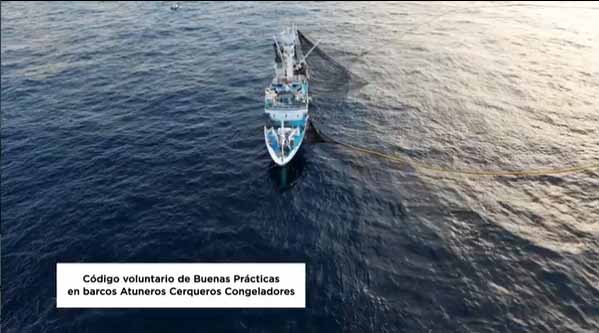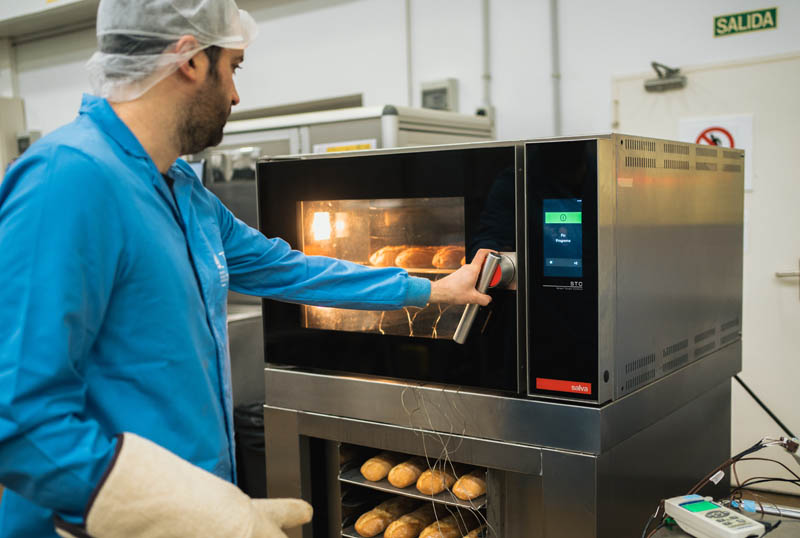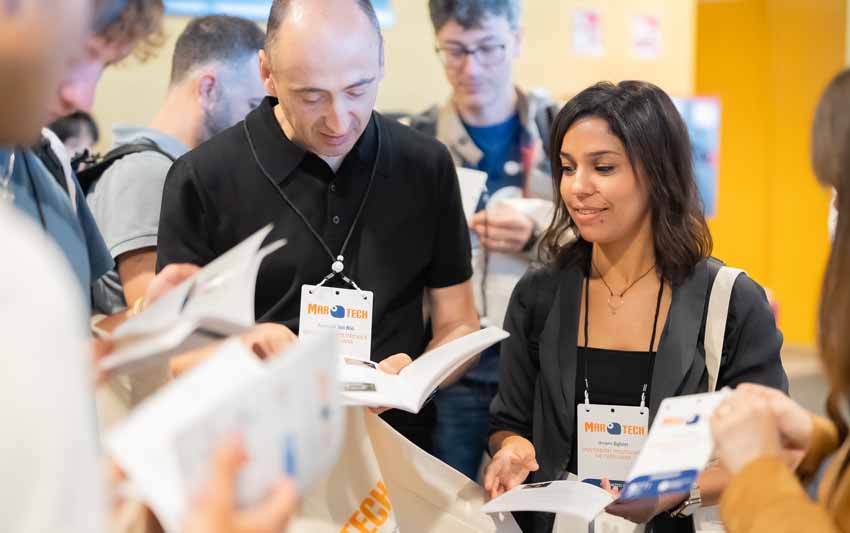“The Code of Good Practices is the big project to achieve sustainability in fisheries and minimise the unwanted effects of the activity”
Últimas noticias
Una mirada LGTBIQ+ al reino animal
Circular Economy in Action: Valorisation of By-products through Projects like PRIMA NEWFEED
Strategic Perspectives: Highlights from the Food4Future World Summit for Business Leaders
A sustainable fisheries sector is essential to be able to maintain its activity while enjoying the benefits it brings. To achieve this, it is crucial to establish synergies. Collaboration between the fishing fleet and the scientific community is key, just as it is essential that science is aligned with the relevant institutions.
Improvement programmes for sustainable tuna fishing, such as the OPAGAC and ANABAC Code of Good Practices, are a good example of this cooperative work, favouring the development and application of more selective fishing operations.
On the occasion of International Tuna Day, we talked about all this with JOSU SANTIAGO, coordinator of the Sustainable Tuna Management Area at AZTI.
What role do unwanted catches play in the sustainability of fishing and, more specifically, in the tuna sector? What is being done to reduce these rates?
All fisheries generate some unwanted bycatch. The tropical tuna freezer purse seine fishery, despite having a low bycatch rate per tonne of tuna (1-3% according to an ISSF 2023 report), has its share of impacts on some megafauna species such as sharks and mobulids, both from the elasmobranch family.
In order to reduce the level of unwanted catches, the joint work between scientific staff and vessel personnel is very important and has borne many fruits, such as the Code of Good Practice.
In order to make the code as accessible as possible and to empower the fleet to reduce the impact of unwanted fishing, we have just published a guide to good handling and release practices that aims to update the best options today to maximise the survival of bycatch associated species, always taking into account the safety of the crew as a necessary condition.
Many of the new release tools shown are precisely the result of collaboration between fishermen and scientists and will be renewed in the future as new solutions are developed to avoid capture or facilitate more effective release of these associated species.
AZTI published the conclusions of a study that shows that by 2050 tuna will be 15% smaller and that their stock will have been reduced by 36% due to fishing pressure and global warming. What exactly are these consequences?
First of all, it should be pointed out that this type of study works with climate models which, as such, adequately reflect trends but whose results, in quantitative terms, should be taken with more caution. That is the first message, to clarify that we are talking about general trends indicated by the models, but precise quantitative values are another matter. And a second point is that, in this case, the impact of climate change as reflected in the models is different depending on which species and ocean we are talking about. The intention is not to create alarm, but to raise awareness of what the models reflect in terms of trends.
Are we aware of this reality and are measures already being put in place to try to prevent these forecasts from coming true?
Many things are being done. First of all, tuna resources in the world are regulated through a number of bodies, the regional fisheries organisations, which are key in regulating fishing activity at a global level. There are five of them: a smaller one that focuses on a single species, the southern bluefin tuna, whose acronym is CCSBT; and there are four others that are important and whose decisions affect the fleets based in Bermeo. These are ICCAT, which is the Atlantic; IOTC, the Indian Ocean; and there are two commissions in the Pacific, one is the IATTC and the other is the WCETC. These organisations have a scientific council that through different committees ‘use’ science to advise managers. Well, in these committees, tuna fisheries management measures are being adopted globally and increasingly aligned to what the scientific management advice is. Things are being done, and where they are being done is mainly in these commissions and regional tuna fisheries organisations.
Are we on the right track?
Yes, we are on the right track. Because another important message is that at the moment, of all the tuna fished in the world, 87% of these catches come from healthy stocks. In other words, at the moment, between 10 and 15% require measures to somehow restore these stocks to their optimum state. We must not lose sight of the fact that 87% of these world tuna catches are made from healthy resources, so the aim of these commissions is to work to ensure that not only the tuna stocks, but also the environment and the ecosystems in which the tuna live, are healthy in 100% of their actions.

What role is the Basque fleet playing in this move towards sustainable fishing?
The Basque fleet is a fleet that, in a way, has been a pioneer when it comes to promoting and adapting to sustainability seals. The Basque inshore fleet was the first in Spain to obtain the MSC seal for tuna, in this case for North Atlantic albacore tuna. It was followed by the freezer tuna fleet, which is a powerful fleet as it is responsible for around 10% of the world’s tuna catches, mostly from vessels based in Bermeo, so its role in world fishing activity is frankly significant. And as for what this fleet is doing, they are the ones most interested in guaranteeing sustainability. It is their future, it is clear to them, and there are many initiatives that are moving in that direction. For example, their collaboration with science (both with us and with other international scientific bodies) is very close. They have been pioneers in providing very relevant data such as, for example, information on the echo sounders they use in their fishing, on catches… in other words, basic information that allows us scientists to make quantitative assessments to diagnose the state of the resources. And on the other hand, this fleet has been a pioneer in agreeing a code of good practice that is obligatory for all companies and vessels to incorporate into their activity. What for? This fleet makes extensive use of what are called FADs (fish aggregating devices). This code established and continues to establish references for the use of these devices, for example, that they do not have to be netting devices to avoid unwanted catches. They are also working on incorporating biodegradable materials to reduce the impact in terms of ocean pollution, impacts on sensitive habitats… In addition, together with us, they are supporting and incorporating measures and instruments to reduce mortality when releasing sensitive species, such as turtles, sharks or manta rays, for example. They are also doing an extraordinary job there, incorporating devices that are significantly reducing the undesirable effects of any fishing activity.
What are the main projects or initiatives AZTI is working on in this area?
One of the major projects is to identify and incorporate good practices in fishing activity to mitigate and reduce undesirable effects as much as possible. For example, one of the species that appears most frequently as bycatch is the so-called silky shark, and we are carrying out tagging work. We are implanting two types of tags: one that provides information on survival, that is, we put an electronic tag that has to be released after 60 or 90 days, depending on how it is programmed. If it is released earlier, it means that the animal has died, but if the tag continues to emit after 60 days, it means that it has been released, which is how it was programmed. This allows us to assess the survival added by these good practices. We also tag species with other electronic tags that constantly collect information such as temperature or pressure over depth, and that have light sensors that together with time, can report positions and so we are able to track the entire trajectory of the animal. This allows us to build what are called habitat models and better understand the behaviour and biology of these animals.
Another project also linked to good practices is the incorporation of what we call Hopper, which is basically a hopper located in the vicinity of the unloading hatch of the vessels, over which the fish is dumped, allowing us to release unwanted catches in a more optimal way and reduce their mortality. It is a project with an important impact as it is being incorporated in quite a few units. And we have other projects with the industry to evaluate the impact of FADs on the ecosystem, in particular in what would be sensitive areas such as coral areas, etc. As well as multiple other initiatives.







